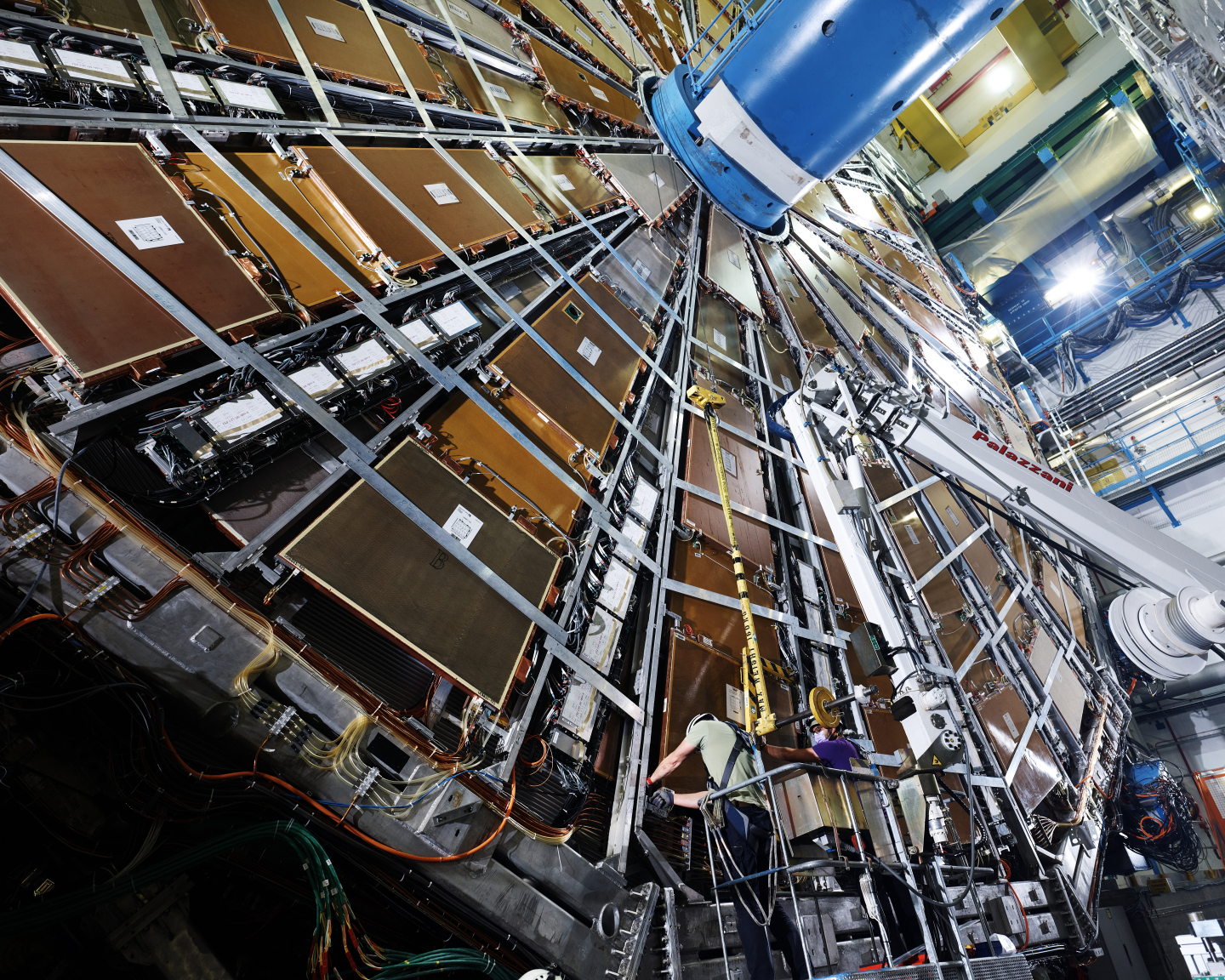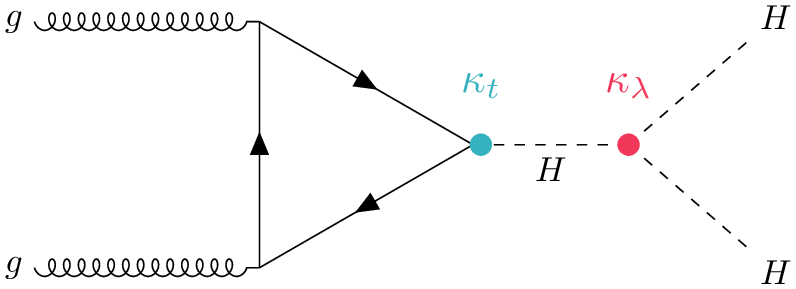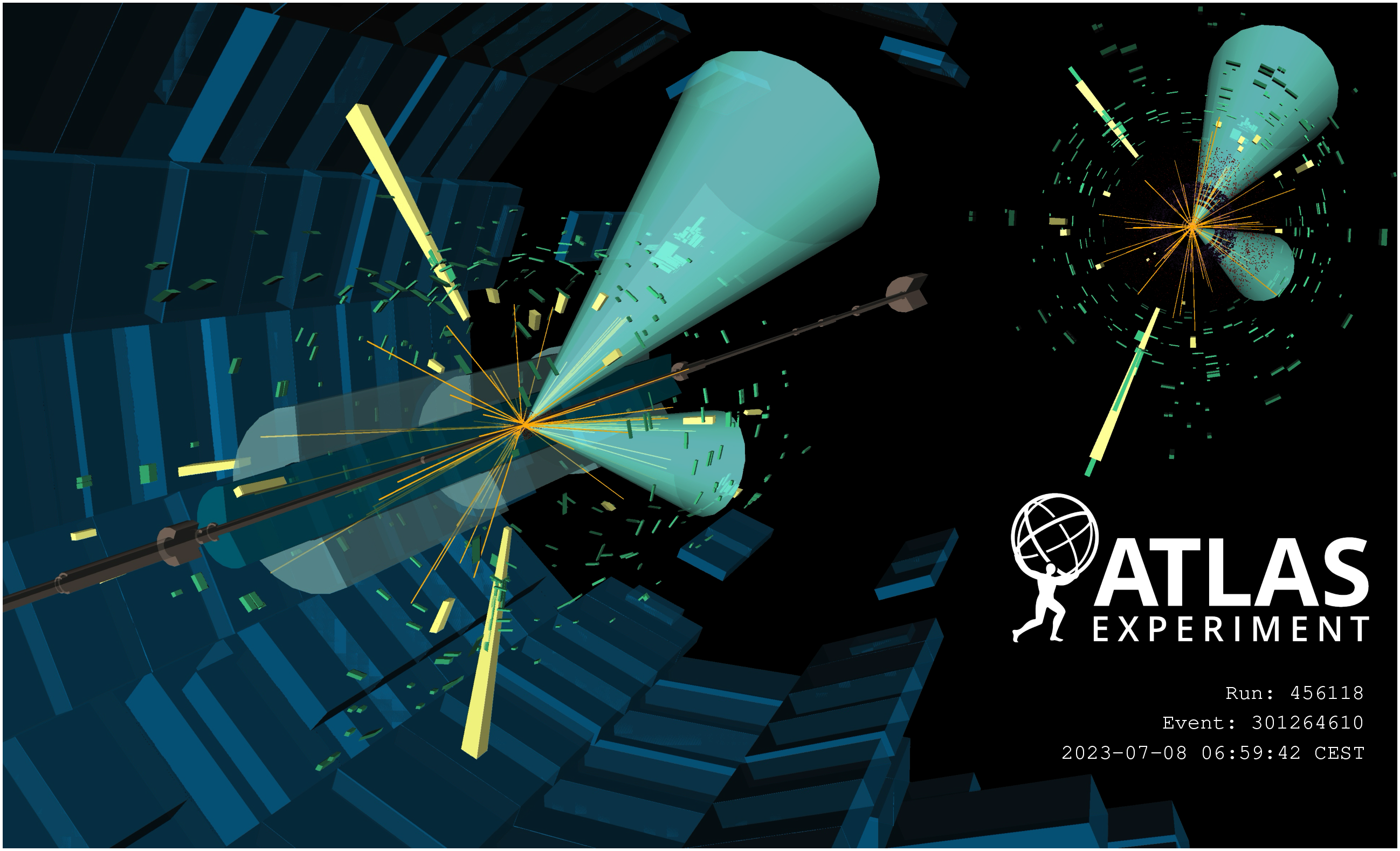Follow us on Google News (click on ☆)
Thanks to the development of machine learning techniques and the increasingly efficient accumulation of collision data by the ATLAS and CMS particle detectors, its measurement, deemed impossible just a few years ago, now seems to be taking shape. Explanations.

The ATLAS detector at the LHC. The two people at the bottom of the image give an idea of its dimensions.
Image: CERN
LHC research has a bright future ahead: 16 years after the start-up of the world's largest collider at CERN, particle collisions at the heart of the large ATLAS and CMS detectors continue to reveal their secrets, drop by drop, about the mysterious particle that is the Higgs boson.
This boson, discovered in 2012 by the two large international collaborations of physicists, is above all the corpuscular manifestation of the Higgs field, whose interaction with other elementary particles gives them their mass. Thirteen years after its discovery, it remains shrouded in many mysteries, and the veil is beginning to lift on one of the most stubborn of them: that of the Higgs boson self-coupling, a phenomenon by which the particle would interact with itself to generate a pair of Higgs bosons.
This interaction, predicted by the Standard Model1, is so rare and so complicated to distinguish from other events generated in the LHC, that it had no chance of being measured with sufficient accuracy by the ATLAS and CMS experiments. At least, that's what the particle physics community thought not so long ago.
By optimizing the hunt for Higgs boson pairs at all levels, scientists are changing the game. Slowly but surely, as seen in the recent results obtained by the ATLAS collaboration, the measurement of the self-coupling is becoming more precise.
To understand what is at stake, one must know that each proton collision at the heart of the LHC generates a myriad of secondary particles, which interact with each other, decay and create new particles. In this chaos, physicists study what they call the "coupling" of particles. They measure how strongly each one interacts with the others. And among the many possible couplings, they are particularly interested in those involving the Higgs boson.
The theory indeed predicts a correlation between the strength of the coupling with the Higgs and the mass of the particles. A prediction that has indeed been confirmed at the LHC for some of the most massive particles in the Standard Model, such as the top quark, which interacts very strongly with the Higgs boson. But what about the Higgs boson itself?
If it has a mass, it must theoretically interact with itself, and physicists would very much like to be sure of this. For them, it would be a great way to verify if the predictions of the Standard Model of particle physics are still as implacably accurate.
On the other hand, if deviations were to arise in this very particular interaction, they would in fact betray the existence of new physical phenomena that have gone unnoticed until now. Phenomena that could point to the existence of unknown particles or help explain the asymmetry between the amount of matter and antimatter observed in the Universe. Since the mass of the Higgs boson is known precisely, that of its self-coupling is easy to deduce and, in theory, it would be enough to sift through the LHC data to verify it. But that's where things get complicated.

The formation of Higgs boson pairs is a very rare mechanism, 1000 times less frequent than the formation of single Higgs bosons. The most common mechanism comes from the fusion of two gluons (see image above). The coupling constant, denoted K lambda, characterizes the strength of the self-interaction.
Source: ATLAS Collaboration.
Physicists must indeed detect, among the intense background noise produced in LHC collisions, pairs of Higgs bosons, one of the expected manifestations of self-coupling. But this process is very rare and to complicate matters, it is impossible to detect it directly, because the Higgs bosons decay too quickly to be spotted by particle detectors.
Scientists must therefore proceed indirectly by searching for the products of their decay. To do this, they study three decay "channels": the "bbbb" channel where 4 bottom quarks are generated simultaneously, by far the most common but also the hardest to discern; the "bb TT" channel where two bottom quarks emerge with two tau leptons, rarer but easier to discern; and finally the "bbγγ" channel, by far the rarest of the three, but the easiest to distinguish, where the decay of the two Higgs bosons produces 2 bottom quarks and 2 gamma photons.
"What makes our task so difficult is the extreme rarity of the events we are trying to observe," comments Nicolas Berger, a researcher at LAPP (CNRS/USMB) and a member of the ATLAS collaboration. "Out of the billions of collisions recorded in the LHC's second operational period (Run 2) between 2015 and 2018, we estimate that only a handful will have given rise to a Higgs pair decaying in the channel we favor, the 'bbγγ' channel. Our first priority in this quest for self-coupling is therefore to significantly increase the amount of data available".

Scientists search the detector data for signatures corresponding to the decay of Higgs boson pairs. Three variants are mainly sought: the rarest, 0.3% of emitted pairs, named "bbYY", corresponds to 2 bottom quarks emitted simultaneously with 2 gamma photons; the most frequent, 34% of cases, "bbbb" results in the emission of 4 bottom quarks; the intermediate, 7% of cases, "bbTT" where 2 bottom quarks emerge alongside 2 tau leptons.
Above, in this event recorded in the ATLAS detector at CERN, the simultaneous emission of two bottom quarks (blue cones) and two gamma photons (yellow lines) characteristic of the bbYY channel is clearly visible. There are also other channels being studied, and ultimately it will be the combination of all of them that will allow the value of the Higgs boson self-coupling to be determined.
Source: ATLAS collaboration.
And to achieve this, all means are good. Thus, in their latest publication, the members of the ATLAS experiment did not just analyze the 168 fb−1 2 of data from the LHC's run 3, ongoing since 2022, they also re-analyzed the Run 2 data using new machine learning techniques to uncover self-coupling events that had gone unnoticed. These are particle tagging and event categorization techniques, based on graph neural networks and transformers.
Techniques increasingly used in particle physics, as evidenced by the other recent result from the search for the decay of the Higgs boson into a charm quark pair by CMS. As a result, the ATLAS publication on the study of self-coupling in the "bbγγ" channel is based on a total of 308 fb−1. A first step that sets the tone, but leaves scientists still far from the goal.
"If we want to be able to place strict constraints on the Higgs self-coupling, we need to improve other aspects, such as our ability to collect data, our selection, analysis, or even precise storage methods," says Olivier Davignon, a researcher at LLR (CNRS/Ecole Polytechnique) and a member of the CMS collaboration. "We have, for example, developed more efficient triggering algorithms in recent years. They allow us to better select promising events for subsequent analysis.
Thus, since data-taking in 2023, algorithms explicitly targeting the production of Higgs boson pairs or a particular production mode of Higgs bosons allow us to significantly increase the amount of data ultimately available for our analyses. This additional data is temporarily set aside to be processed ("reconstructed") for analysis a few months after that collected with the standard algorithms.
Put together, these tricks are beginning to bear fruit and the results of the ATLAS publication reflect this. The limits placed today on the value of the Higgs self-coupling based solely on the "bbγγ" channel are of the same order as those placed several years earlier based on all three channels available in the Run 2 dataset. The forthcoming inclusion of additional channels by the ATLAS and CMS experiments will undoubtedly tighten these limits further. As for obtaining a precise value?
"Given the extreme difficulty in distinguishing the Higgs boson self-coupling signal, we can only hope to continue tightening the limits on this value in the coming years, towards the end of Run 3 and with the HL-LHC," replies Nicolas Berger. But we remain optimistic! New estimates indicate that the sensitivity achieved by our experiments during HL-LHC operation could be twice what we predicted just five years ago, for the same amount of data, and this solely due to progress in data analysis. Who knows what we can achieve if our analysis techniques continue to improve at the same rate? However, it is quite possible that only a new accelerator of the FCC-hh type will allow us to precisely measure the Higgs boson self-coupling".
Notes:
1 Standard Model of particle physics, a set of equations that describe elementary particles and their interactions with a precision that has so far never been challenged.
2 The femtobarn is a unit representing the quantity of proton/proton collisions taken into account.